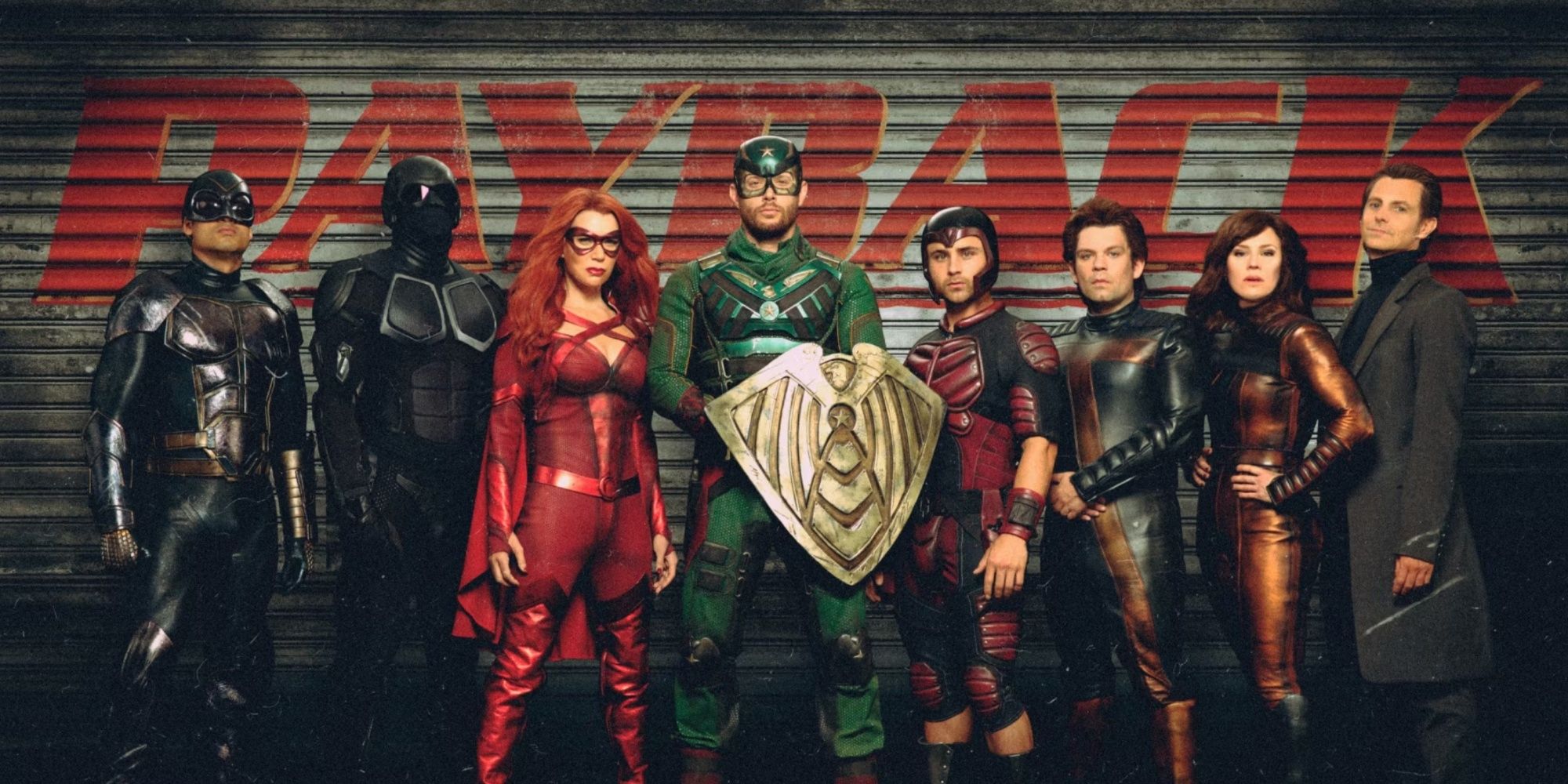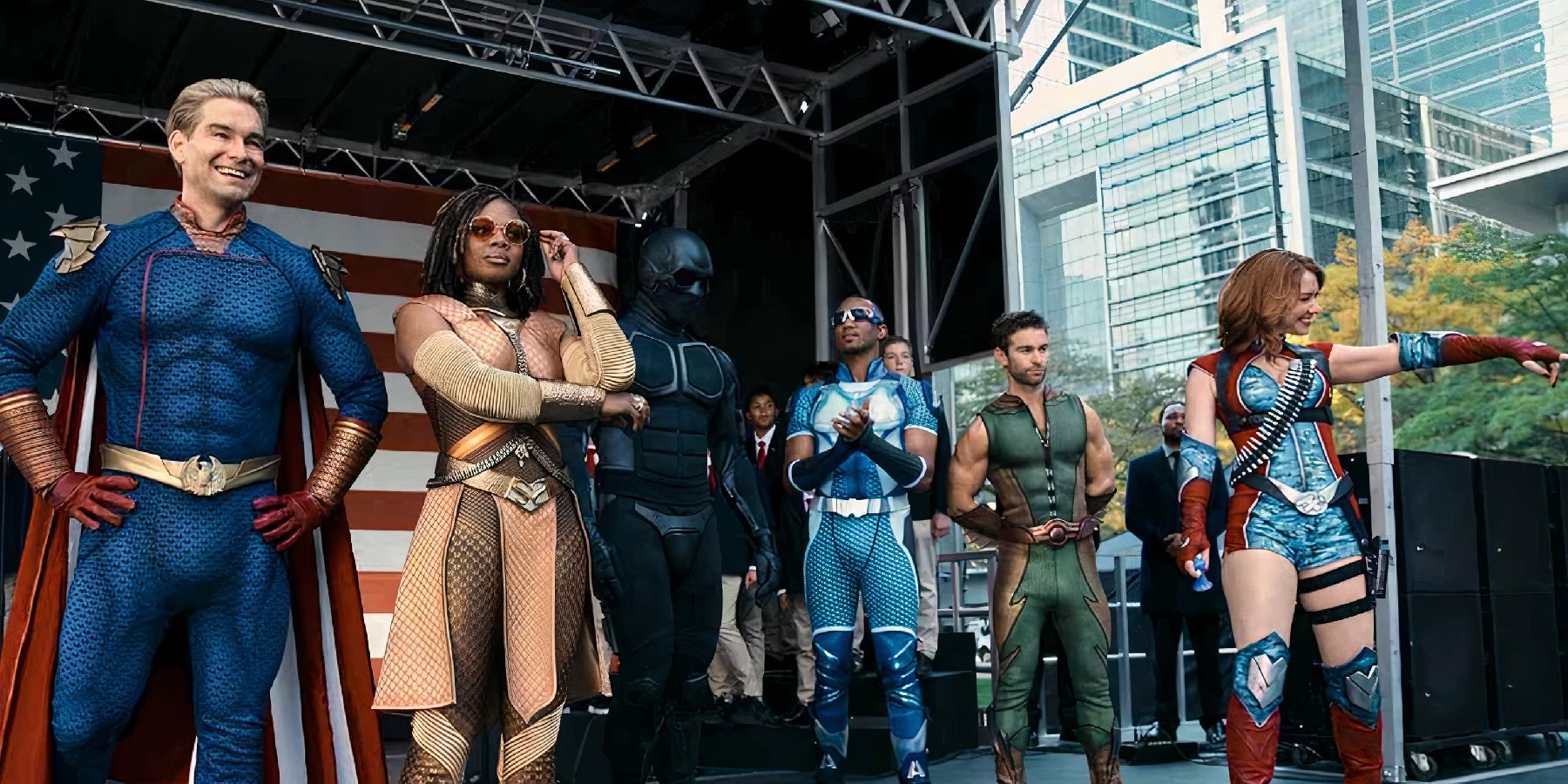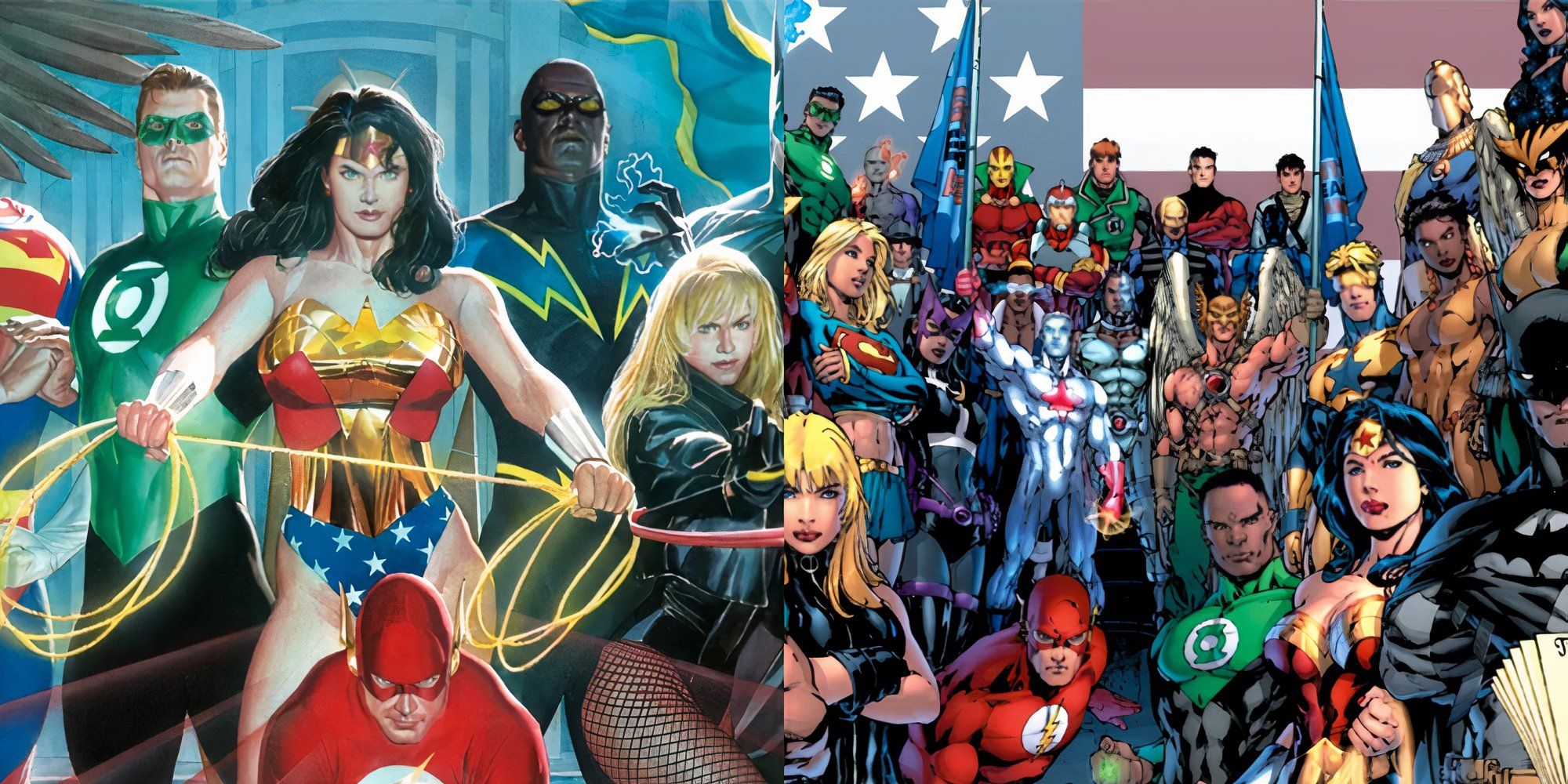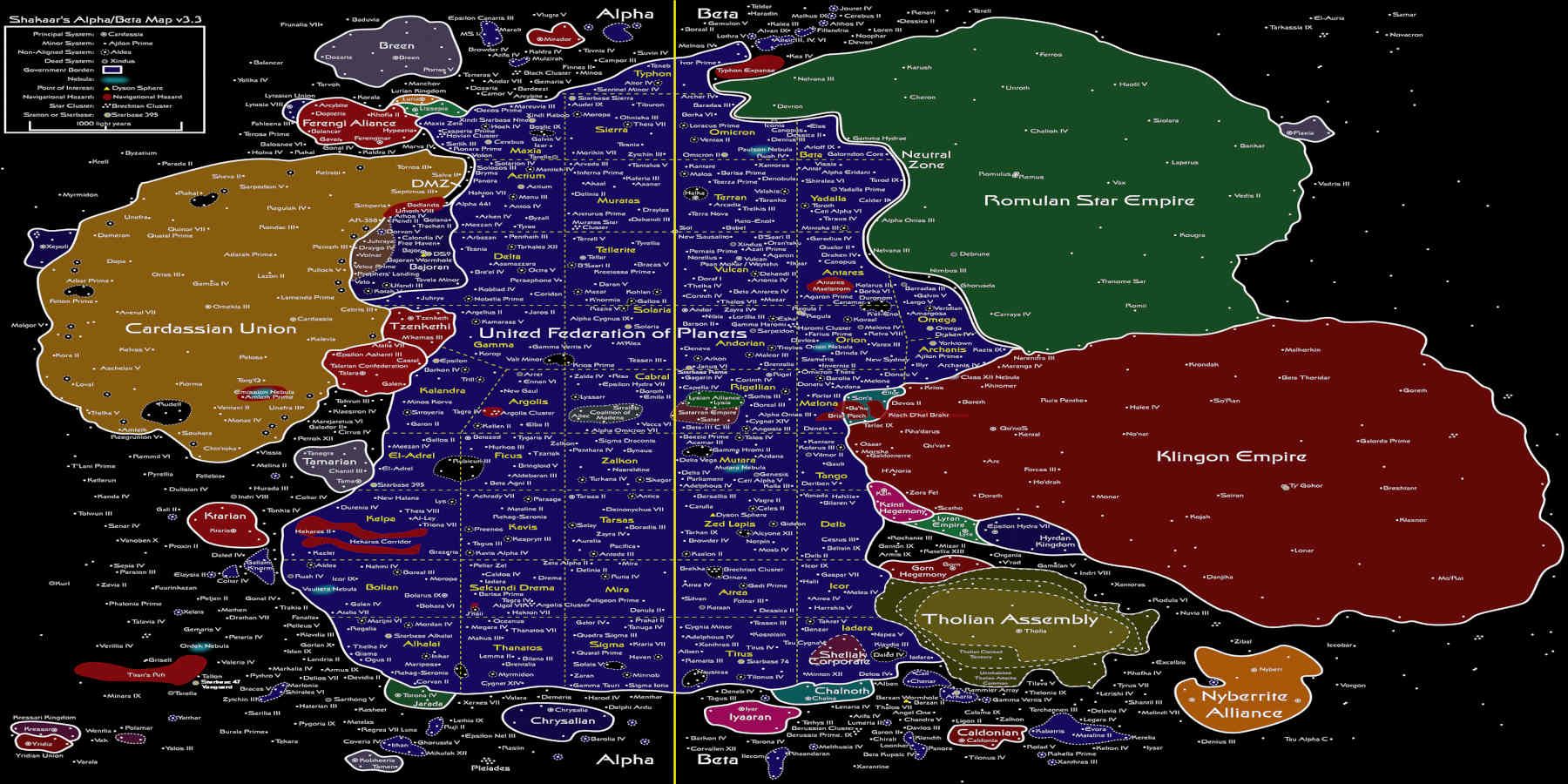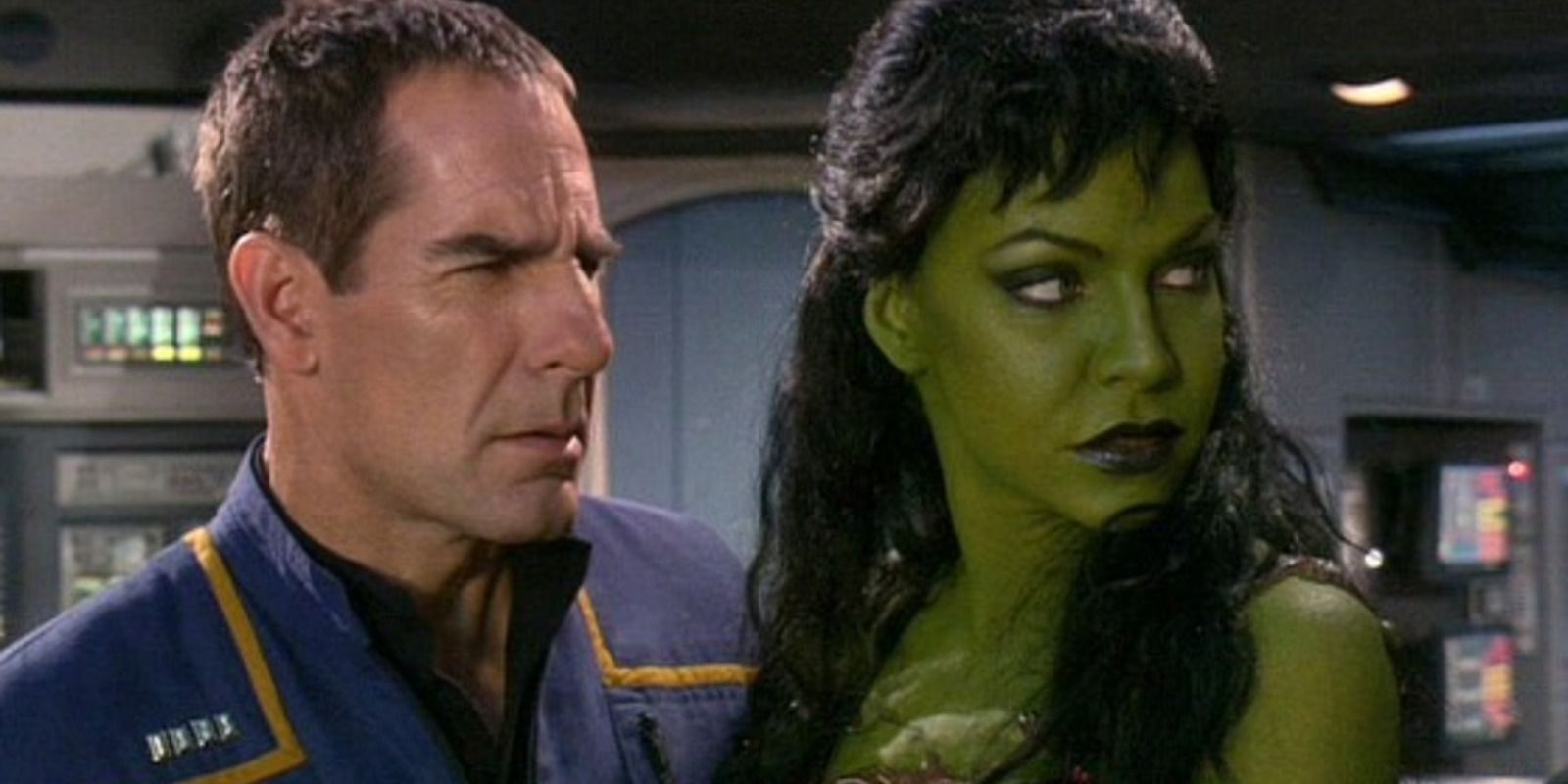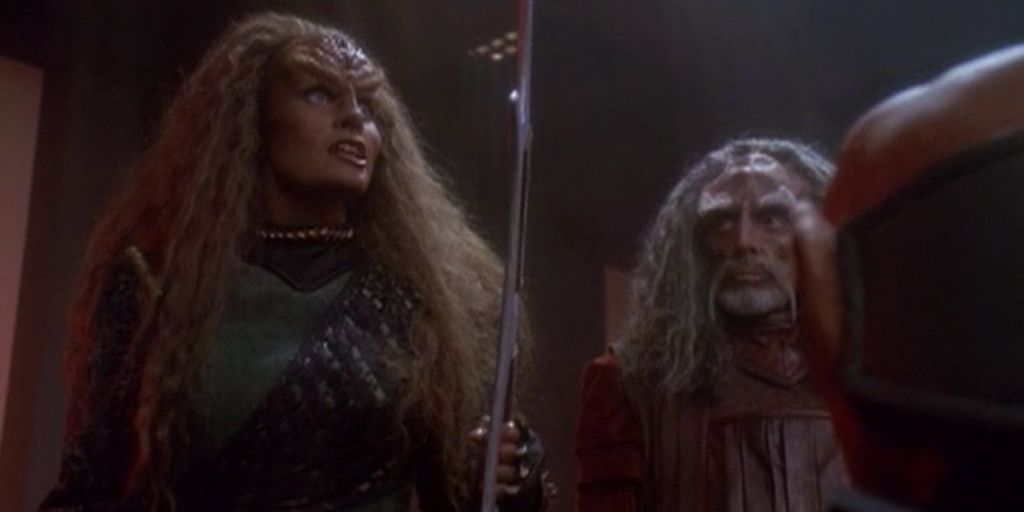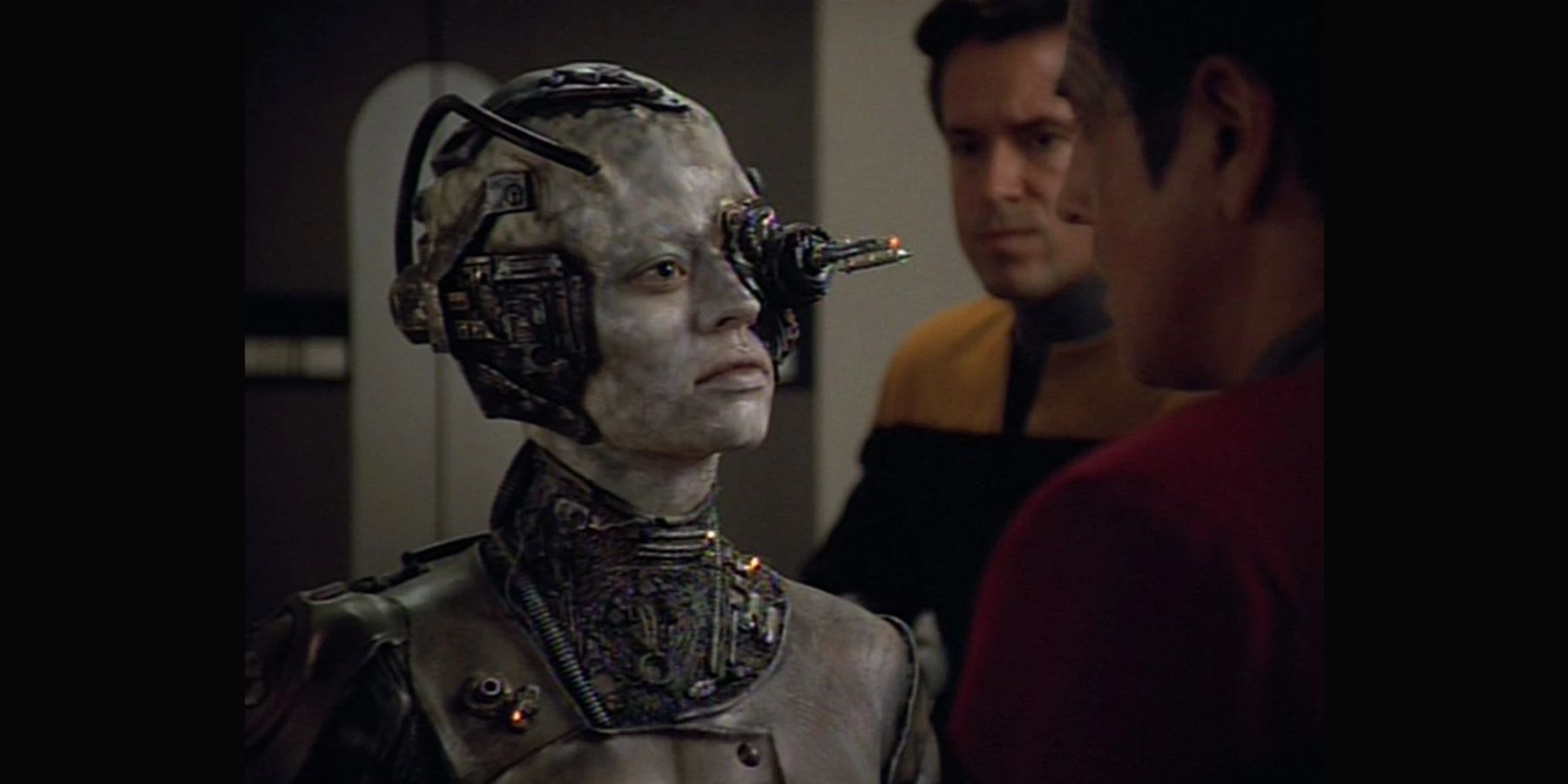The Beta Quadrant might be home to some of the biggest political powerhouses of Star Trek, but it has remained a largely unexplored section of the galaxy. In Star Trek VI: The Undiscovered Country, Captain Hikaru Sulu (George Takei) concludes a three-year mission to learn more about gaseous planetary anomalies in the Beta Quadrant. Yet, The Undiscovered Country didn’t show Captain Sulu’s adventures, and thus didn’t show what he and the crew of USS Excelsior learned along the way.
This has left many fans still curious about what it’s like in the Beta Quadrant. It’s not exactly boring, but it’s not at the center of anything notable. High-stakes drama rarely takes place within its borders, unless Starfleet officers are on the verge of being thrown into a Klingon prison or sentenced to death. It’s not at the center of galactic warfare, like the Dominion War in the Gamma Quadrant in Deep Space Nine. It’s not even one of the most talked-about quadrants in the franchise. Yet, the Beta Quadrant is still important to the story, if for nothing else than the variety of galactic races calling it home.
What Races Live In The Beta Quadrant?
Many Star Trek races reside in the Beta Quadrant. Among them are Andorians, Risians, Bolians, Orions, and the infamous Gorn. Vulcans also call the Beta Quadrant home, which has sometimes been debated against the belief that the planet of Vulcan is actually in the Alpha Quadrant.
Some species, however, are lesser known. The Acamarians of Acamar III, for example, keep to themselves outside a handful of appearances in The Next Generation. Like Humans and Vulcans, Acamarians overcame a long history of violence before entering an era of peace. Those who opposed this evolution became the Gatherers, raiding various outposts before reaching their own peace through Captain Jean Luc Picard (Patrick Stewart) in season 3, episode 9, “The Vengeance Factor.”
The R’ongovians, for their part, left a lasting impression by introducing the concept of “radical empathy” in Strange New Worlds. It’s a type of emotional connection that literally has a person walk in someone else’s shoes to better understand their perspective. Think of T’Pring (Gia Sandhu) hilariously swapping bodies with Spock (Ethan Peck) in season 1, episode 5, “Spock Amok.”
Regardless of the many different species that call the quadrant home, the Federation has been able to establish many starbases and outposts in the Beta Quadrant. One of these is Deep Space 4, where Captain Kathryn Janeway (Kate Mulgrew) went searching for information on Seven of Nine (Jeri Ryan) in Star Trek: Voyager. While the Federation lacks major enemies in the Beta Quadrant, those that exist do so with political force and enough manpower to scare even the bravest Starfleet officers.
The Federation has had bad blood with the Klingon and Romulan governments almost since the beginning of Star Trek. This has made the Federation’s presence in the Beta Quadrant controversial, to say the least. Qo’noS is the homeworld of Klingons at the heart of their system in the Beta Quadrant. Klingons have a passion for violence that has driven many Star Trek storylines, including the time Chief Engineer Montgomery Scott (James Doohan) and Ensign Pavel Chekov (Walter Koenig) got into a fistfight with visiting Klingons on Deep Space Station K-7 in The Original Series.
Romulus is also located in the Beta Quadrant and is the homeworld of Romulans, cousins of Vulcans who left because they disagreed with the lifelong pursuit of achieving perfect logic. Their rivalry with Starfleet got so bad at one point that it inspired the creation of the Romulan Neutral Zone, designed to add extra political padding around pre-existing borders. But instead of decreasing the violence, Romulans often weaponized their ability to hide in the Romulan Neutral Zone after deliberately attacking Federation outposts. It was something of a game of chicken, in space and between highly intelligent adults.
One of the biggest threats to the Federation, though, has been the Borg. While this militaristic collective originated in the Delta Quadrant, they utilized transportation tools in the Beta Quadrant that were eventually destroyed in Voyager. Yet, this isn’t the only thing that’s made the Beta Quadrant so important.
What Is The Significance Of The Beta Quadrant?
The Beta Quadrant wasn’t very prevalent in any Star Trek series outside a few references and notable instances. It did, however, set the stage for conflicts that reached far beyond its borders. In addition to putting hostile governments in shooting range of one another, the Beta Quadrant has strategic significance. The Borg established a transwarp hub and thousands of exit apertures within it to make traveling across the galaxy at a moment’s notice more accessible.
Aside from the Borg, Iconia plays an important role in the Star Trek universe. The Iconians were destroyed centuries prior to Klingons and Romulans, and wereamong many to establish star systems within the Beta Quadrant. They left behind the resource-rich planet of Iconia. In The Next Generation, fighting over the planet’s technology game to a head when Captain Picard had Iconia destroyed once and for all. It was an extreme measure, but not one taken lightly in the face of all the issues between the Federation, Klingons, and Romulans.
It’s easy to dismiss the Beta Quadrant as the least interesting part of the Star Trek galaxy. Despite being the primary location of warring superpowers, not a lot happens within its borders. It’s not like other quadrants that are featured heavily in interesting episodes or exciting movie plots. At the same time, though, space exploration is the heart of any Star Trek project. The whole point is to boldly go where no one has gone before. The Beta Quadrant presents the perfect opportunity for curious science officers to extend their galactic knowledge. Maybe one day a Star Trek storyline will unfold within the Beta Quadrant that’ll leave fans talking about it for years afterward. Until then, the quadrant will have to remain unknown to all but those who call it home.

